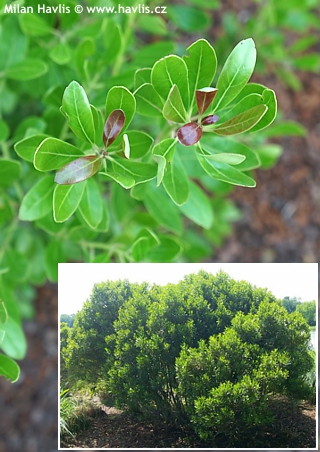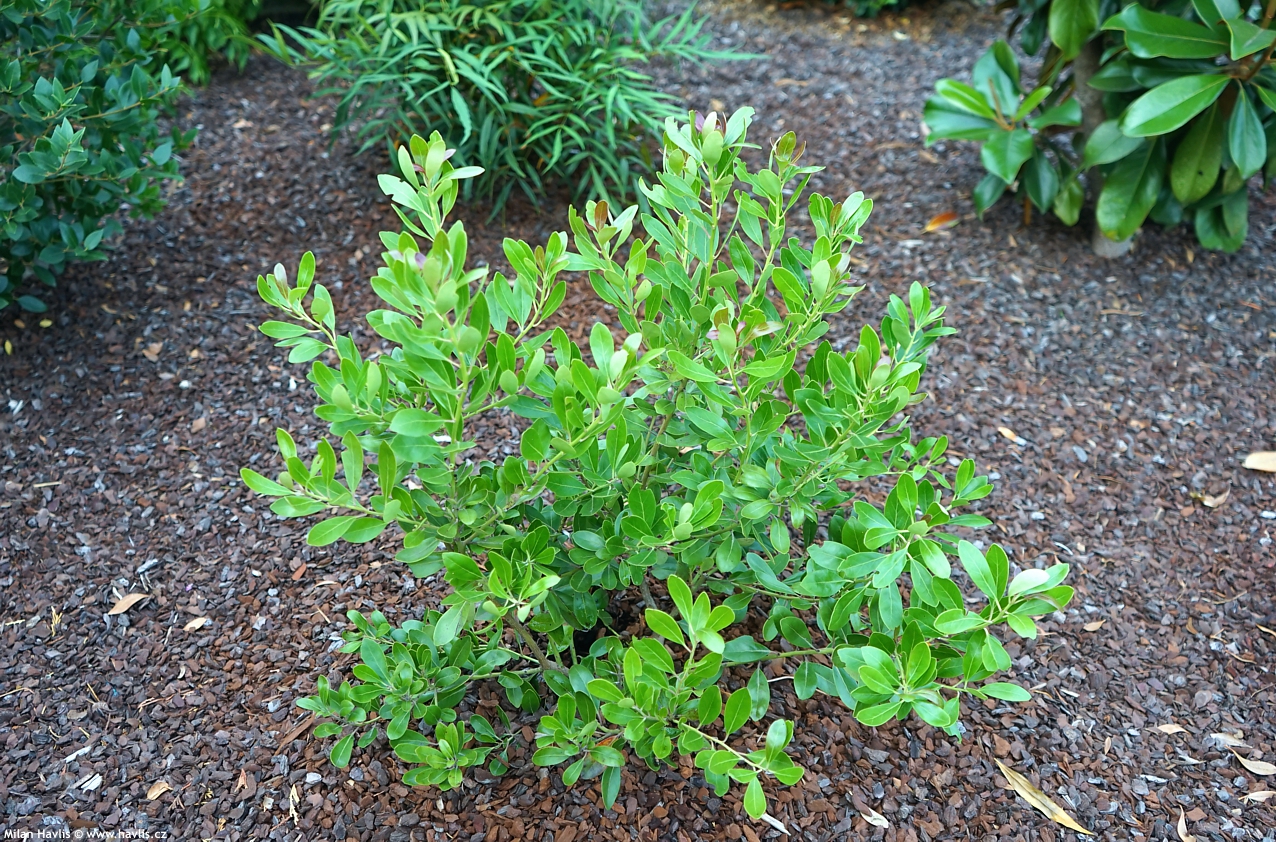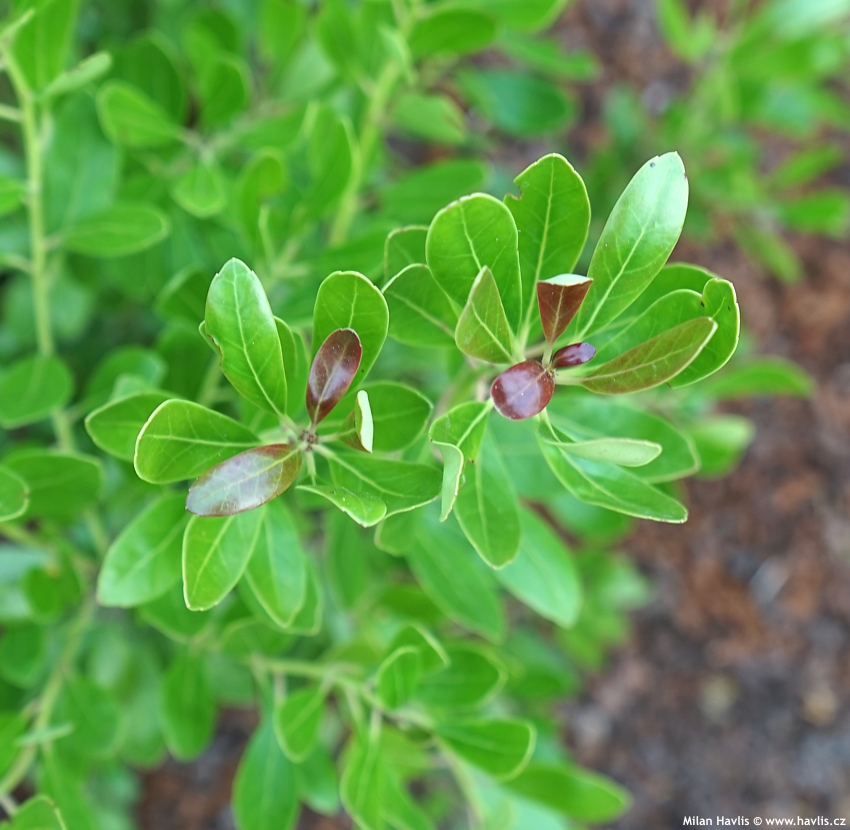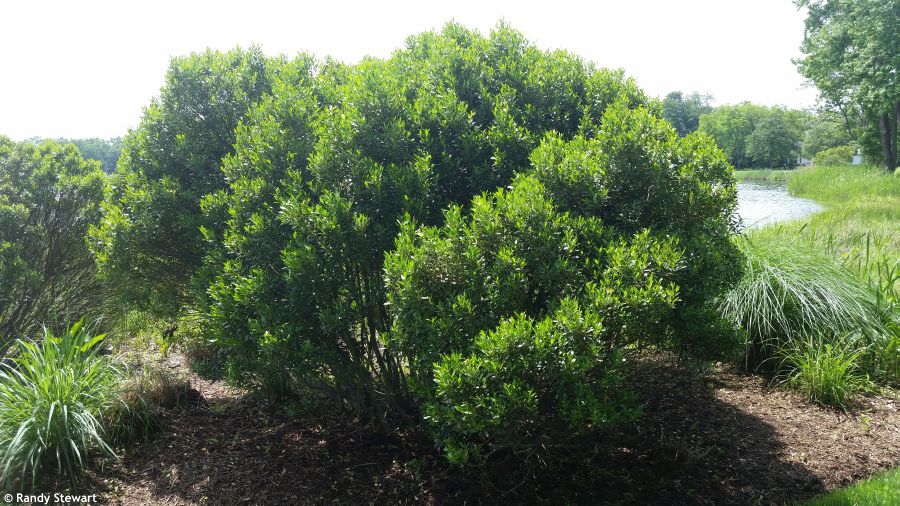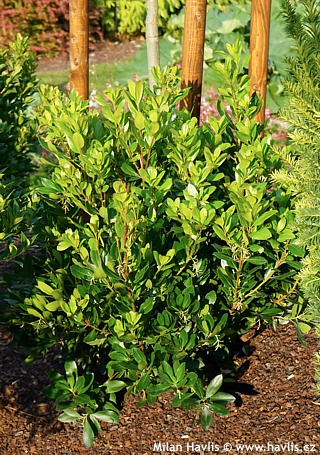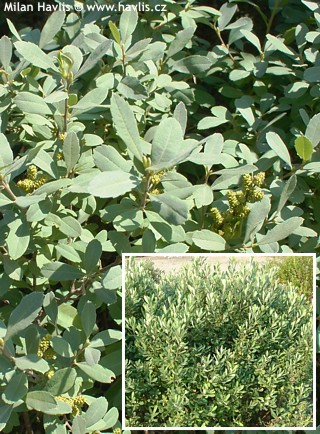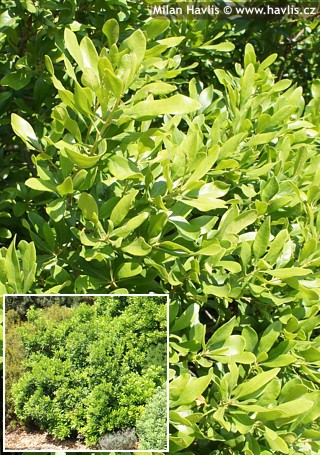Ilex glabra inkberry, gallberry, Apalachian tea
Ilex
Inkberry is one of a few plant species I knew I wanted to grow the moment I came across them. But don’t get me wrong – I am not talking about love at first sight here, it was more of an urge. In some cases I even dreamt about them long before I saw them in real life. And when I saw them for the first time I simply knew they would be growing here without a problem. How could I? Don’t ask me. Some call it intuition, others call it destiny. I have no idea. Come to think of it – is it at all legal when intuition inserts commercial breaks into my sleep urging me to seize a plant? Anyhow. All those plants I was made grow and promote here in Central European climate were a success, and all of them were evergreen and proved reliable. Just like inkberry. So I won’t be ungrateful and tell you a story about another taxon I simply HAD to grow.
Ilex glabra has a number of names: inkberry, gallberry, Appalachian tea, dye-leaves or evergreen winterberry. Do you notice that neither of them says holly? Because it does not really look like one. When a plant has so many names it is usually very old and native to a large area so each country or state gave it their own name. Its natural habitat is truly vast – from Nova Scotia in Canada to Florida in the USA. It occupies almost entire east coast of North America and I mean coast literally as it lives not only in common ground but mainly on moist and boggy banks. It looks like those small-leaved bog plants from the heath and heather family and makes them a great company. It grows slowly and forms dense, many branched colonies.
Its evergreen leaves are anything but holly. They are narrowly ovate to elliptic, 3-4 cm long, medium green, glossy, and emerge with deep maroon hues. They are soft and smooth with entire (non-spiny) margins. In the old days they would be dried and used for making tea by Native Americans hence one of its names – Appalachian tea. In the middle of spring opens a profusion of small, white, and really cute flowers containing plenty of food for bees, producing famous light-coloured Gallberry Honey, renowned especially in Georgia, South Carolina, and Florida. Pollinated flowers are followed by small, glossy, black fruit in autumn. Their taste may have given the plant another of its names – gallberry, extremely bitter and obviously inedible. And for sensitive individuals possibly slightly poisonous as the seeds contain small doses of toxic saponins.
It grows slowly into a handsome, upright, often rounded shrub. It seldom required pruning but if you train young plants helping them form a strong basal framework it will branch densely and will be more reliably leaved from the ground. It even takes hard pruning for rejuvenation. Being stoloniferous it produces above-ground suckers which root readily and form colonies just like ground-covering honeysuckle. Unrequired spreading can be controlled easily by removing these stolons.
It requires acidic soil with plenty of organic matter, constant moisture, full sun or part shade. It can even take wet ground and heavy (clay and compacted) soil. Perfectly hardy to min. -34 °C (USDA zone 4) and some US sources even suggest -40 °C (USDA zone 3).
Last update 05-12-2020

































